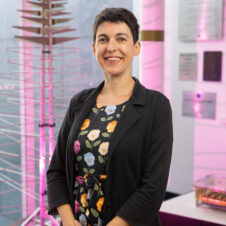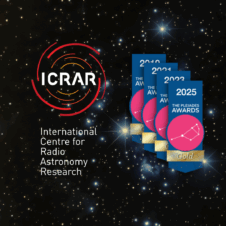The official proceedings were opened this morning by the Honourable Colin Barnett, Premier of Western Australia, in the presence of the SKA Organisation Director General, Professor Philip Diamond, as well as the US Consul General, and representatives from the Dutch and UK governments.
“This is one of the great scientific endeavours of the century” said Colin Barnett. “I think it’s a breathtaking project” he added.
“This is a very important week for the SKA Project. We have achieved a lot in the last year as we will see in the updates but a lot remains to be done and this is why we’re here, to refine the design of the SKA and make it a reality. We’re entering a very important phase of the project,” said Prof. Diamond.
“We’re honoured to host the SKA Engineering Meeting here in Australia and in Perth, Australia’s capital of radio astronomy. The SKA and its precursors in Australia are progressing steadily and we look forward to a busy three years until construction of the SKA starts” said Prof. Brian Boyle, the Australian SKA Director.
Two days of talks presenting updates on all aspects of the project, from governance to precursor telescopes progress, design of the various elements of the SKA and science priorities will set the stage for two days of working meetings to discuss detailed aspects of the telescope’s design.
The SKA Project is now in the pre-construction phase with 11 teams –called consortia- carrying out design work to enable the project to enter the construction phase in 2017-2018. These consortia are spread across the globe and are constituted from a variety of institutes and commercial companies. Each consortium has been tasked with designing a specific element of the SKA telescope, from computing to infrastructure and antenna design.
The 2014 Engineering Meeting opens an important period for the SKA, with an upcoming preliminary design review, which will look closely at the designs brought forward by the various consortia for the element they’re responsible of. The design review will also look closely at the detailed cost estimates calculated by the consortia for the SKA’s first phase of construction, and will work to make these costs fit inside the allocated envelope of EUR 650 million for phase 1, while at the same time ensuring the telescope delivers groundbreaking science.
This will drive a re-baselining process to optimise the phased deployment of the SKA, before progressing to the critical design review in 2016. The science priorities of the SKA which are currently being refined will also be taken into account to help decide what instruments should be built first and what their specific design should be.
“We are entering a critical phase for the SKA, with the first important design review and concrete cost estimates. It’s a reality-check for the SKA to show our funders everything is on track and I know we will pass it with flying colours” said Alistair McPherson, Head of Project at the SKA Organisation.
There will be a range of special events around the meeting, including an after-dinner talk by Dr. John O’Sullivan, credited with being one the inventors of Wi-Fi when working for CSIRO’s radio astronomy department.
On Tuesday evening, a unique event will take place with the inauguration of the SKA’s international Shared Sky art/astronomy exhibition, bringing art works from indigenous and local artists of Western Australia and South Africa together for the first time around the theme of a shared sky. The exhibition will be inaugurated at the John Curtin Gallery in the presence of nearly 500 guests, before going on a global tour. More details on the exhibition are available here.
On Friday, a number of delegates will have the opportunity to visit the Australian SKA site, many of them for the first time due to the remoteness of the site.

